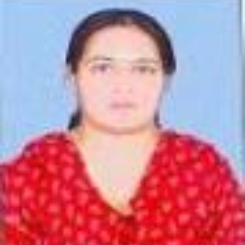International Journal of Image, Graphics and Signal Processing (IJIGSP)
IJIGSP Vol. 5, No. 9, 8 Jul. 2013
Cover page and Table of Contents: PDF (size: 255KB)
A New Design Approach for Speaker Recognition Using MFCC and VAD
Full Text (PDF, 255KB), PP.43-49
Views: 0 Downloads: 0
Author(s)
Index Terms
Mel frequency cepstral coefficients, Voice activity detector, Pre emphasis, Discrete Fourier Transform, Windowing, Graphical user interface
Abstract
This paper presents a new approach for designing a speaker recognition system based on mel frequency cepstral coefficients (MFCCs) and voice activity detector (VAD). VAD has been employed to suppress the background noise and distinguish between silence and voice activity. MFCCs were extracted from the detected voice sample and are compared with the database for recognition of the speaker. A new criteria for detection is proposed which gives very good performance in noisy environment.
Cite This Paper
Geeta Nijhawan,M.K Soni,"A New Design Approach for Speaker Recognition Using MFCC and VAD", IJIGSP, vol.5, no.9, pp.43-49, 2013. DOI: 10.5815/ijigsp.2013.09.07
Reference
[1]Ch.Srinivasa Kumar, Dr. P. Mallikarjuna Rao, 2011, "Design of an Automatic Speaker Recognition System using MFCC, Vector Quantization and LBG Algorithm'', International Journal on Computer Science and Engineering,Vol. 3 No. 8 ,pp:2942-2954.
[2]Amruta Anantrao Malode,Shashikant Sahare,2012 , "Advanced Speaker Recognition", International Journal of Advances in Engineering & Technology ,Vol. 4, Issue 1, pp. 443-455.
[3]A.Srinivasan, "Speaker Identification and verification using Vector Quantization and Mel frequency Cepstral Coefficients",Research Journal of Applied Sciences,Engineering and Technology 4(I):33-40,2012.
[4]Vibha Tiwari, "MFCC and its applications in speaker recognition",International Journal on Emerging Technologies1(I):19-22(2010).
[5]Md. Rashidul Hasan,Mustafa Jamil,Md. Golam Rabbani Md Saifur Rahman, "Speaker Identification using Mel Frequency Cepstral coefficients",3rd International Conference on Electrical & Computer Engineering,ICECE 2004,28-30 December 2004,Dhaka,Bangladesh.
[6]Fu Zhonghua; Zhao Rongchun; "An overview of modeling technology of speaker recognition", IEEE Proceedings of the International Conference on Neural Networks and Signal Processing Volume 2, Page(s):887 – 891, Dec. 2003.
[7]Seddik, H.; Rahmouni, A.; Sayadi, M.; "Text independent speaker recognition using the Mel frequency cepstral coefficients and a neural network classifier"First International Symposium on Control, Communications and Signal Processing, Proceedings of IEEE 2004 Page(s):631 – 634.
[8]John G. Proakis and Dimitris G. Manolakis, "Digital Signal Processing", New Delhi: Prentice Hall of India. 2002.
[9]Rudra Pratap. Getting Started with MATLAB 7. New Delhi: Oxford University Press, 2006.
[10]S. Furui, "Speaker-independent isolated word recognition using dynamic features of speech spectrum," IEEE Trans. Acoust., Speech, Signal Process., vol. ASSP-34, pp. 52-9, Feb. 1986.
[11]Sasaoki Furui, "Cepstral analysis technique for automatic speaker verification," IEEE Trans. Acoust., Speech, Signal Process., vol. 29(2), pp. 254-72, Apr. 1981.
[12]D.A. Reynolds, "Experimental evaluation of features for robust speaker identification," IEEE Trans. Speech Audio Process., vol. 2(4), pp. 639-43, Oct. 1994.
[13]L. Rabiner, and B.H. Juang, "Fundamentals of Speech Recognition", Singapore: Pearson Education, 1993.
[14]B. Yegnanarayana, K. Sharat Reddy, and S.P. Kishore, "Source and system features for speaker recognition using AANN models," in proc. Int. Conf. Acoust., Speech, Signal Process., Utah, USA, Apr. 2001.
[15]C.S. Gupta, "Significance of source features for speaker recognition," Master's thesis, Indian Institute of Technology Madras, Dept. of Computer Science and Engg., Chennai, India, 2003.
[16]B. Peskin, J. Navratil, J. Abramson, D. Jones, D. Klusacek, D.A. Reynolds, and B. Xiang, "Using prosodic and conversational features for high-performance speaker recognition," in Int. Conf. Acoust., Speech, Signal Process., vol. IV, Hong Kong, Apr. 2003, pp. 784-7.
[17]H. Sakoe, and S. Chiba, "Dynamic programming algorithm optimization for spoken word recognition," IEEE Trans. Acoust., Speech, Signal Process., vol. 26, pp. 43-9, Feb. 1978.
[18]Y. Linde, A. Buzo, and R.M. Gray, "An algorithm for vector quantizer design," IEEE Trans. Communications, vol. COM-28(1), pp. 84-96, Jan. 1980.
[19]R. Gray, "Vector quantization," IEEE Acoust., Speech, Signal Process. Mag., vol. 1, pp. 4-29, Apr. 1984.
[20]F.K. Soong, A.E. Rosenberg, L.R. Rabiner, and B.H. Juang, "A Vector quantization approach to speaker recognition," in Proc. IEEE Int. Conf. Acoust., Speech, Signal Process., vol. 10, Detroit, Michingon, Apr. 1985, pp. 387-90.
[21]L. Lin, and S. Wang, "A Kernel method for speaker recognition with little data," in Int. Conf. signal Process., Budapest, Hungery, May, 2006.
[22]T. Matsui, and S. Furui, "Comparison of text-independent speaker recognition methods using VQ-distortion and Discrete/continuous HMMs," IEEE Trans. Speech Audio Process., vol. 2(3), pp. 456-9, July 1994.
[23]R.P. Lipmann, "An introduction to computing with neural nets," IEEE Trans. Acoust., Speech, Signal Process., vol. 4, pp. 4-22, Apr. 1989.
[24]W.M. Campbell, J.P. Campbell, D.A. Reynolds, E. Singer, and P.A. Torres-Carrasquillo, "Support vector machines for speaker and language recognition," Computer Speech and Language, vol. 20, pp. 210-29, 2006.
[25]D.A. Reynolds, T.F. Quateri, and R.B. Dunn, "Speaker verification using adapted Gaussian mixture models," Digital Signal Processing, vol. 10, pp. 19-41, 2000.
[26]B. Yegnanarayana, and S.P. Kishore, "AANN: An alternative to GMM for pattern recognition," Neural Networks, vol. 15, pp. 459- 69, 2002.

